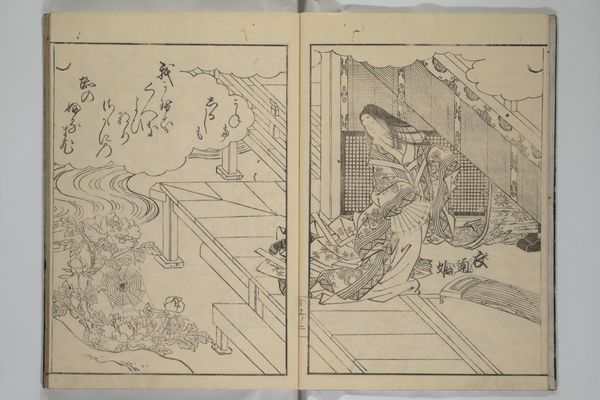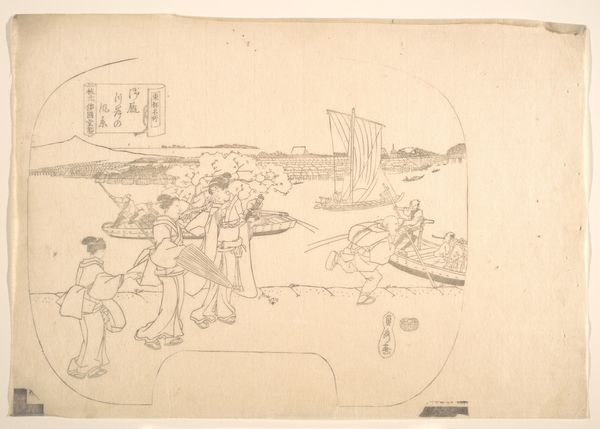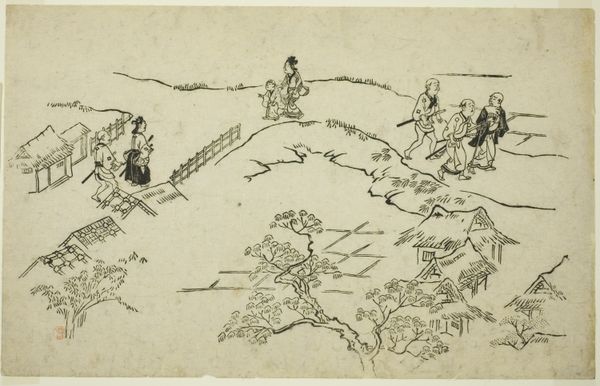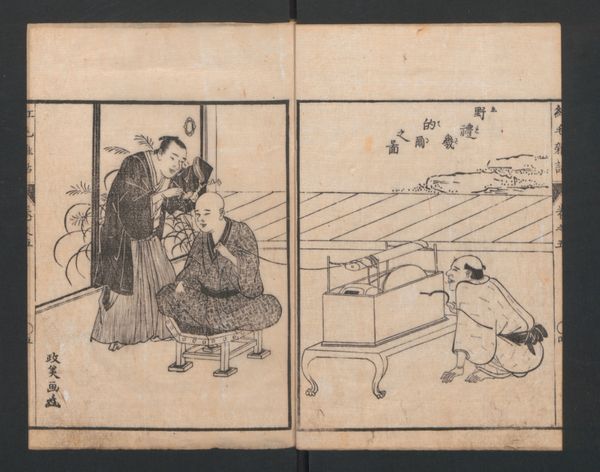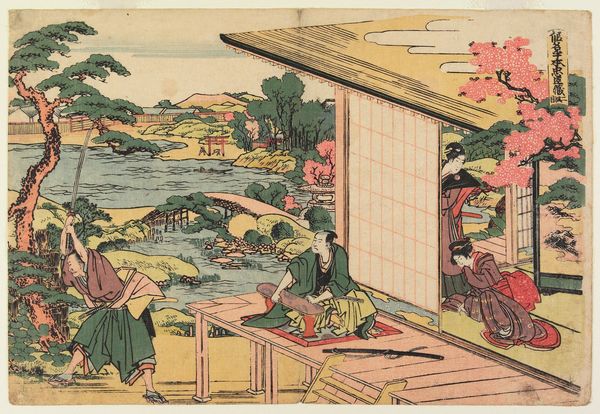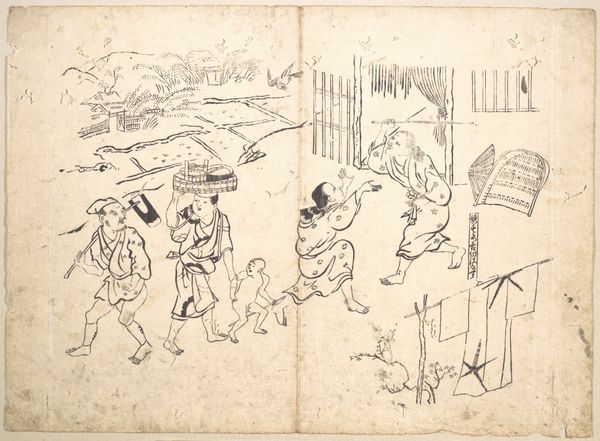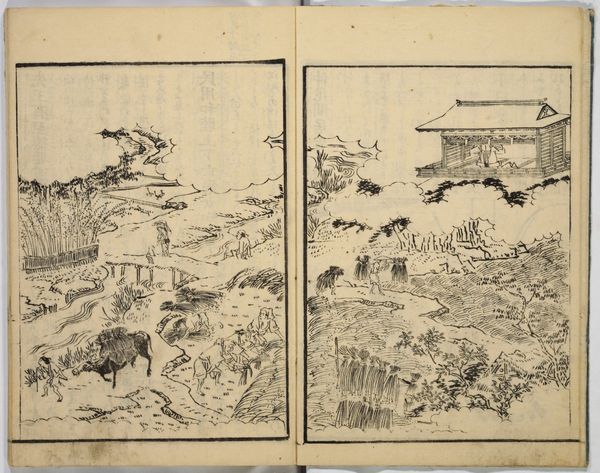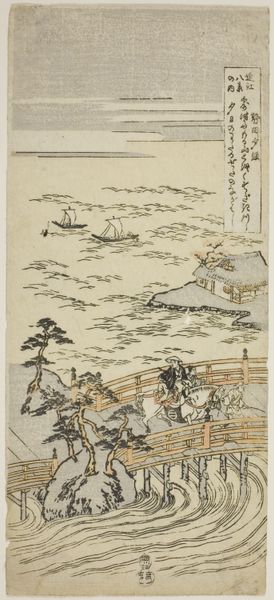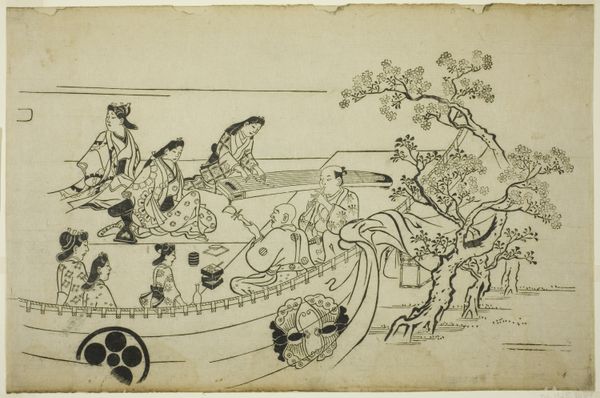
Dimensions: height 221 mm, width 275 mm
Copyright: Rijks Museum: Open Domain
Editor: Here we have Tachibana Morikuni's "Archer," from 1714, a captivating piece created with ink on paper. There's something so serene yet tense about this scene. The archer contrasts so starkly with the tranquil setting of the landscape and the placid figures on the platform. What strikes you most about the composition? Curator: The dynamism achieved solely through line and spatial arrangement is remarkable. Note the foregrounding of the archer; the bridge bisects the composition and offers a middle ground, while landscape features become increasingly abstracted as we move to the background. This suggests a flattening of pictorial space characteristic of much East Asian art of this period, albeit within a representational context. Does the absence of color affect your perception? Editor: It does in some ways; without color, you’re forced to concentrate on the line work, the shape of things. You lose the emotional element that color often brings. Do you think that's intentional, placing greater importance on form? Curator: Precisely. Consider how the tautness of the drawn bow contrasts with the soft, billowing clouds and rounded forms of the trees. The lines create a visual echo of the action itself – a charged stillness before release. Observe the angularity of the architecture too: the bridge creates a linear pattern that moves your eyes around the page. It invites careful scrutiny of the shapes within shapes. How does this formal language strike you in relation to its historical era? Editor: It suggests a society placing value on discipline and observation, as those values would translate naturally to art through meticulous rendering and symbolic simplicity. It’s intriguing to see how technique and precision are foregrounded. I see now that color is secondary in importance here. Thank you, this was enlightening! Curator: A fruitful discussion. Paying such close attention to the form and the intrinsic design elements reveals a great deal, about art and, in some sense, about ourselves too.
Comments
No comments
Be the first to comment and join the conversation on the ultimate creative platform.
